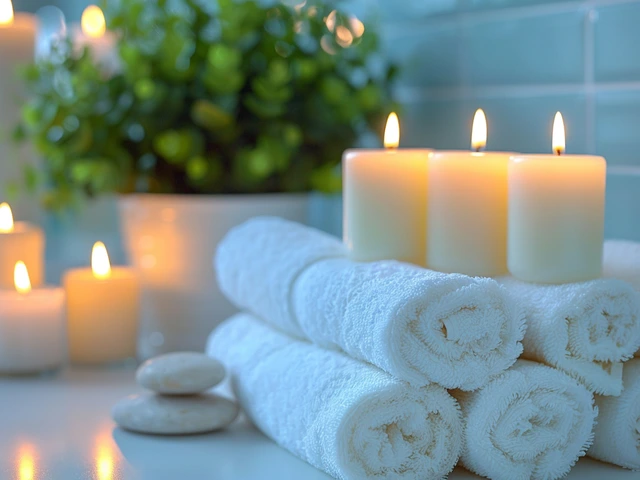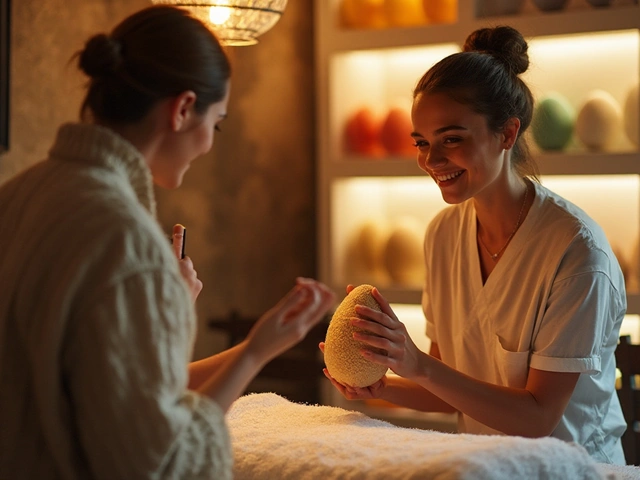Understanding Milking Table Massage
At its core, milking table massage is a blend of innovative design and traditional massage techniques created to offer deep relaxation and targeted muscle relief. The 'milking table' itself is distinct—it features a specialized cut-out section where the client rests their body while the massage is performed. This unique structure allows for an unimpeded range of motion, providing masseurs with better access to areas that would typically be more challenging to reach. Initially rooted in the practices intended for deep tissue and sports therapies, milking table massages have evolved to incorporate various holistic wellness modalities, therefore promoting a more comprehensive approach to wellbeing.
Origins and Popularity
While the origins of the milking table massage are relatively modern, the theory behind it draws on age-old principles of holistic wellness. Its rise in popularity can be attributed to the unique combination of comfort, effectiveness, and the personalized nature of the therapy. It quickly resonated with audiences looking for more than just a conventional massage; they were seeking an experience that caters to both physical and mental rejuvenation.
Benefits of Milking Table Massage
The benefits of undergoing a milking table massage are multi-faceted, encompassing enhancements to one's physical health, mental clarity, and emotional balance. Physiologically, this massage format assists with muscle recovery, alleviates back pain, and improves lymphatic circulation. Clients often report a significant reduction in stress, owing to the relaxing nature of the technique used. This is not to mention the psychological reprieve from the hectic demands of daily life—taking the time for a milking table massage is very much an investment in personal wellbeing.
Emotional and Mental Wellbeing
Beyond tangible physical relief, the milking table massage experience can act as a therapeutic session for emotional and mental release. Given the fact that stress and anxiety can manifest in bodily tension, this specialized therapy can provide a conduit for alleviating the psychological weights we carry. The quiet and focused environment invites a mindful escape, enabling clients to detach from their worries, if only for the duration of the massage.
Techniques Employed
Therapists trained in milking table massage employ a range of techniques, all meant to maximize the physical and mental benefits. From kneading and stroking to percussive tapping, the actions are carefully executed to facilitate stress release and improve circulation. The design of the milking table itself also allows therapists to perform more advanced maneuvers, like stretching and joint mobilization, which can be especially beneficial for sports recovery or chronic pain management.
Learning and Training
For massage therapists, learning to perform a milking table massage requires additional training beyond the standard curriculum. Workshops and certification programs are available, and these focus on technical mastery, safety protocols, and understanding the holistic nature of this specific massage practice. It's this specialist knowledge and skill that contribute significantly to the therapy's growing appeal.
Tips for First-Timers
If you're considering a milking table massage for the first time, there are several tips to keep in mind. It's essential to communicate openly with your therapist about your comfort levels and any areas of concern. Hygiene and personal care beforehand can make the experience more comfortable for both you and the therapist. Also, it's crucial to have realistic expectations; while transformative for some, every individual's response to massage therapy can differ.
Selecting a Therapist and Venue
The choice of therapist and venue can significantly impact the effectiveness of a milking table massage. It's recommended to seek out licensed practitioners with specific training in milking table techniques. The venue should uphold the highest standards of professionalism, hygiene, and client privacy. Online reviews and referrals can provide insight into the quality of service provided.
Common Misconceptions
Despite its benefits and professional application, milking table massage is sometimes burdened by misconceptions, largely stemming from a lack of public awareness. Many confuse it with forms of adult entertainment when, in fact, it's a legitimate practice focused on health and relaxation. Clearing up these misunderstandings helps legitimize the therapy and ensures that it's accurately represented within the wellness community.
Professional Boundaries and Etiquette
Adhering to professional boundaries and etiquette is paramount in any massage therapy, and milking table massages are no exception. Therapists and clients alike should maintain respectful communication and clear boundary-setting to ensure a mutually beneficial and comfortable experience. Upholding these standards protects the integrity of the practice and the comfort of all parties involved.
Integrating Milking Table Massage Into Your Wellness Routine
Incorporating milking table massage into a regular wellness routine could significantly elevate your overall sense of well-being. Its unique properties make it a compelling complement to other health practices, such as yoga or meditation. Consider speaking to a wellness advisor to determine how best to integrate this type of massage into your ongoing health initiatives.
Customization and Personal Preferences
One of the highlights of milking table massage is its ability to be customized to each client's preferences and needs. Don't hesitate to discuss specific issues or outcomes you're aiming for with your therapist. This dialogue ensures that your massage is not just a routine procedure but a tailored therapeutic experience attuned to your personal health journey.
Future of Milking Table Massage
As wellness trends continue to evolve, the future of milking table massage appears promising. It's becoming more mainstream as people discover its unique advantages. The increase in wellness tourism and the expansion of boutique spa offerings suggest that the demand for such specialized massage experiences will only continue to grow. With ongoing research supporting its health benefits, milking table massages are well-positioned to become a staple in the repertoire of holistic health practices.






